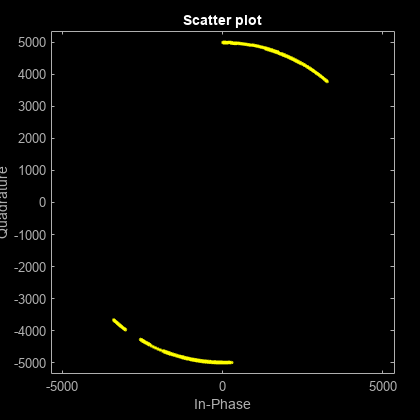gnssSignalTracker
Description
The gnssSignalTracker
System object™ tracks the phase, frequency, and delay offsets of a global navigation satellite
system (GNSS) signal. This object uses a phase locked loop (PLL), frequency locked loop (FLL),
and delay locked loop (DLL) to track phase, frequency, and code phase, respectively, in the
incoming signal. The object supports tracking these GNSS signals.
To track the phase, frequency, and delay offsets of a GNSS signal:
Create the
gnssSignalTrackerobject and set its properties.Call the object with arguments, as if it were a function.
To learn more about how System objects work, see What Are System Objects?
Creation
Description
gst = gnssSignalTracker
gst = gnssSignalTracker(Name,Value)gnssSignalTracker(GNSSSignalType="QZSS
C/A") sets the type of GNSS signal to "QZSS C/A".
Properties
Usage
Description
[
tracks the phase, frequency, and delay in the input waveform trackedWave,trackInfo] = gst(signal)signal,
and returns the integrated version of the signal trackedWave, after
correcting the respective phase, frequency, and delay errors.
trackInfo is returned as a structure which contains tracking
information of the phase, frequency, and delay of the integrated output signal.
This object implements the tracking algorithms specified in [6].
Input Arguments
Output Arguments
Object Functions
To use an object function, specify the
System object as the first input argument. For
example, to release system resources of a System object named obj, use
this syntax:
release(obj)
Examples
References
[1] IS-GPS-200, Rev:N. "NAVSTAR GPS Space Segment/Navigation User Segment Interfaces." GPS Enterprise Space & Missile Systems Center (SMC) - LAAFB, Aug 22, 2022.
[2] IS-GPS-800, Rev:J. "NAVSTAR GPS Space Segment/User Segment L1C Interfaces." GPS Enterprise Space & Missile Systems Center (SMC) - LAAFB, Aug 22, 2022.
[3] ISRO-IRNSS-ICD-SPS-1.1. "Signal in Space ICD for Standard Positioning Service." ISRO satellite navigation programme. August 2017.
[4] IS-QZSS-PNT-004. "Quasi-Zenith Satellite System. Interface Specification. Satellite Positioning, Navigation and Timing Service." Cabinet office, Government of Japan. January 25, 2021.
[5] IS-GPS-705, Rev:J. "NAVSTAR GPS Space Segment/User segment L5 Interfaces." Aug 22, 2022.
[6] Kaplan, Elliott D., and C. Hegarty, eds. Understanding GPS/GNSS: Principles and Applications. Third edition. GNSS Technology and Applications Series. Boston; London: Artech House, 2017.
